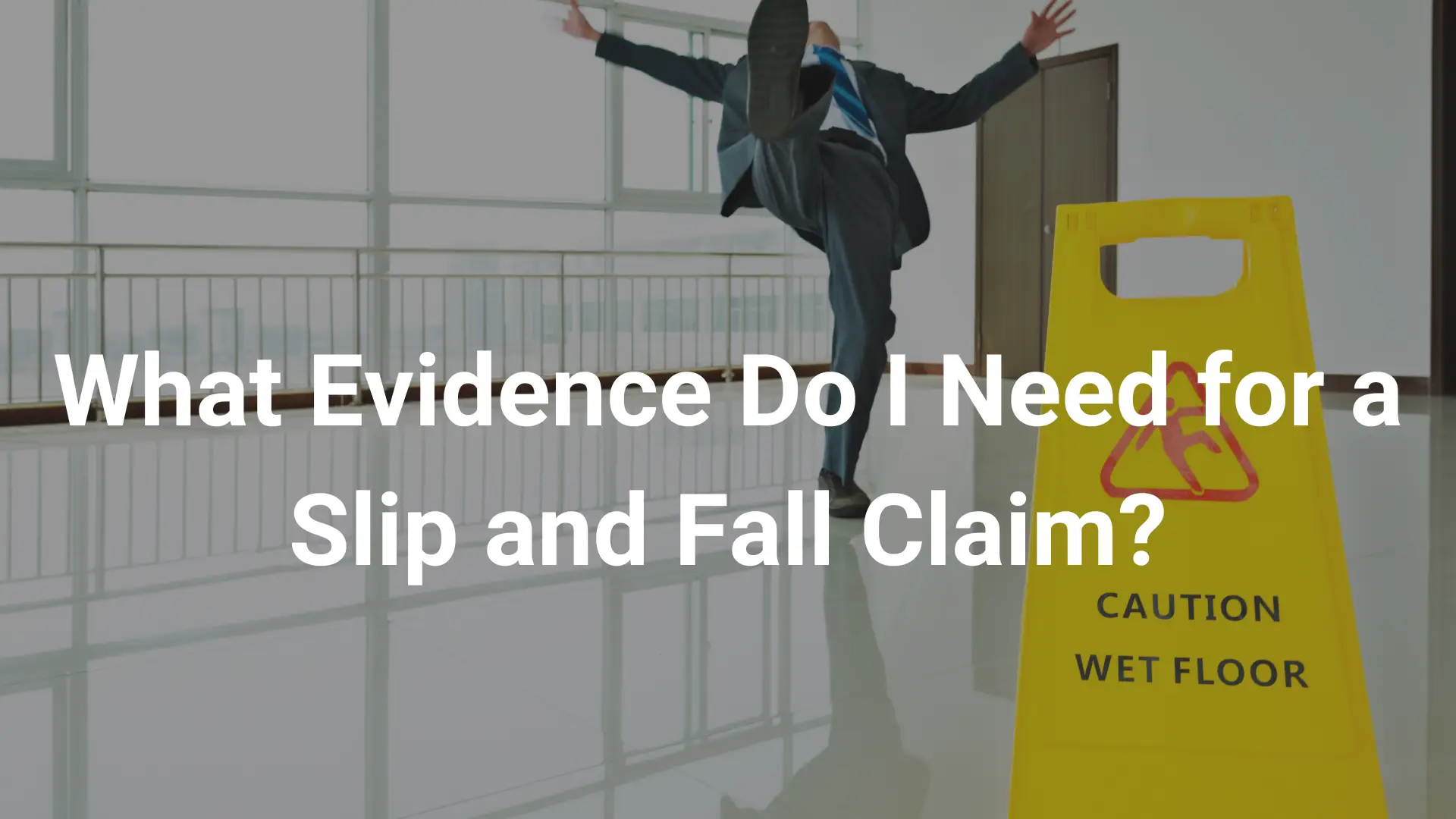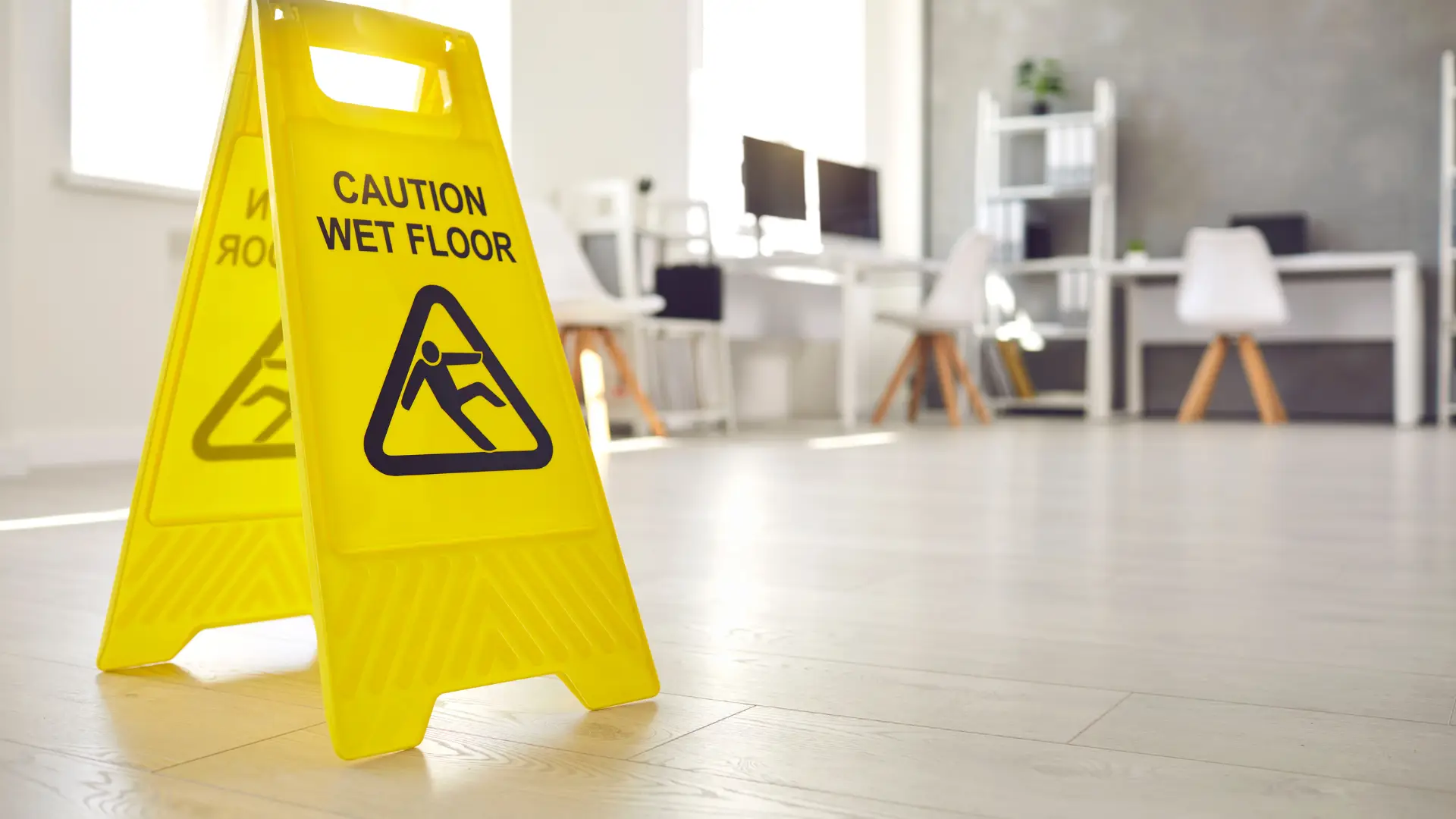
Why Evidence Matters in a Slip and Fall Injury Case
Evidence is necessary for a few reasons in slip and fall injury cases.
When dealing with a slip and fall case, knowing how to choose the right lawyer is as important as gathering the facts. You need someone who understands what it takes to prove that an accident happened. That someone else—often the property owner—was responsible, and you were genuinely injured. The right lawyer will know how to build a solid case with the proper evidence. Guide you through the process, and fight to ensure your voice is heard.
For example, you slipped, fell in a puddle on a grocery store floor, and broke your wrist. You need evidence that shows the puddle existed. The store owner knew or should have known about it and didn’t take steps to remedy it, and your injury is real. This evidence often takes multiple forms, and the more evidence you can acquire, the better.
Types of Evidence You Need to Support a Slip and Fall Injury Claim
Knowing what to do after a slip and fall can make a big difference in the success of your injury claim. One of the most essential steps is gathering strong evidence. Some of the most effective types of evidence include photo and video footage of the scene, eyewitness statements, incident reports, property management logs, medical records, and even personal journal entries detailing your recovery. These pieces help tell the whole story of what happened and how the accident has affected your life.
Accident Scene Photographs
If your injuries allow you to, you should always take photographs of the property hazard that caused your injury. Whether it’s a wet floor, uneven surface, or loose railing, it’s important to have photographic evidence of the risk as it existed when you slipped and fell. If you cannot take a picture directly after sustaining your injury. Someone else can return to the accident scene later to take one.
Security Camera Footage
Many slip and fall incidents are caught on security camera footage, whether inside or outside businesses. If your fall was caught on camera, that can serve as strong evidence in your case, as it will be hard for the defendant to argue that the incident didn’t occur. However, this evidence alone may still not be enough to secure the compensation you need, so having multiple types of evidence is key.
Eyewitness Statements
If other people witnessed your slip and fall, their statements can corroborate your version of events. This is important for establishing you as a credible witness in your case. Witnesses can also provide additional details about the accident, such as whether they previously reported the hazard to the property owner and nothing was done about it.
Business Incident Reports
If your slip and fall occurred on a business’s property, it’s essential that you report the accident to the company and have them fill out an incident report. You should request a copy of this report for your records because it will include key details about the case, such as the date and time of the incident. The existence of an incident report can also prevent the business owner from trying to claim they did not know of your fall.
Property Maintenance Logs
In many cases, slips and falls are due to poor property maintenance. For example, grocery store freezers may leak and cause puddles if not maintained, staircase railings can become loose and unstable, and various slip and trip hazards can be hard to see if a property has poor lighting. Property maintenance logs may show when the property was last serviced and the fixes made.
Medical Records
Medical records are vital for establishing the existence, severity, and extent of your injuries. Even if the property owner accepts that you fell, they may claim that your injuries are less severe than you say they are if you don’t have medical evidence to back it up.
Pain Journal Entries
While not particularly strong evidence on its own, pain journal entries can help bolster your claim for money for pain and suffering. This compensation is calculated to cover your losses with intangible value, and writing down your pain levels each day can help establish how your injuries affect your daily life.
How to Gather Evidence After a Slip and Fall Accident

- First, you can collect evidence from the accident scene directly after the accident. Take pictures and collect witness names and contact information. Also, get a copy of the incident report.
- Second, memorialize the accident. Write down everything you remember, including the time and date of the incident and what caused you to slip and fall.
- Third, you can track your recovery progress through your medical records, pain journal entries, and photographs of your visible injuries.
- And finally, you can hire a slip and fall lawyer to gather evidence on your behalf while you recover. That evidence can include security camera footage.
Please read more about common injury cases here: Most Common Personal Injury Cases and How to Pursue a Claim
How Do Lawyers Use Evidence in Slip and Fall Cases?
Lawyers use the evidence collected in slip and fall cases in several ways. They can use it to prove details about your injuries and liability for your losses, during settlement negotiations, and at trial. While negotiating with the defendant’s insurance company for a fair settlement, the more evidence your personal injury lawyer has, the better that evidence is, the better their chances of securing compensation covering all your losses.
If the insurance company refuses to offer a fair settlement, the evidence collected by your lawyer will also be instrumental in proving your case in court.
Contact Our California Slip and Fall Accident Lawyers
If you were injured in a slip and fall accident in Huntington Beach, California, contact DJA Injury Attorneys at (949) 229-7228. You’ll get a free consultation with an experienced premises liability lawyer. Our team is here to help you understand your rights and take the first step toward securing the necessary benefits. We’ll review your case, explain your options, and help you identify the evidence you need to maximize your compensation.
Related Post
Understanding Partial Fault in Personal Injury Accidents in California
Common Defenses in Personal Injury Cases
What Happens During a Personal Injury Lawsuit Trial?
Who Pays for Medical Bills After a Car Accident in California?
